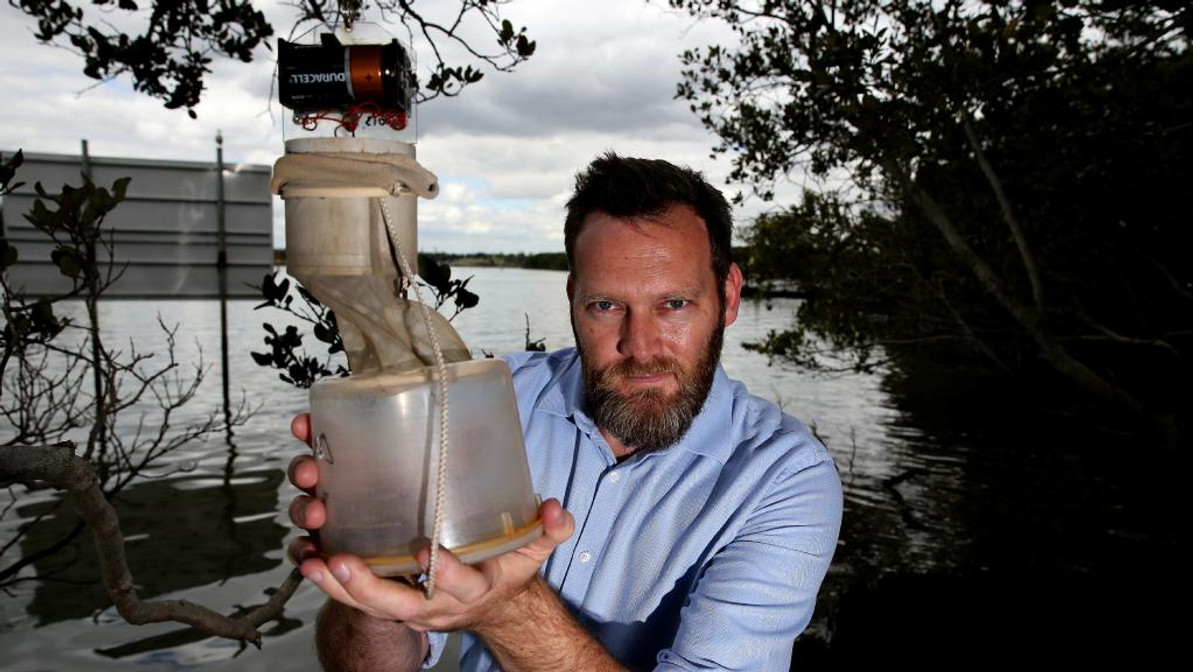Mosquito numbers explode across Sydney after high rainfall: Find out how to keep them at bay
SYDNEY’S big wet and has seen mosquito numbers soar, prompting a warning for us all to remember that mosquito repellent is not just for the summer months.
Dr Cameron Webb, a mosquito researcher with NSW Health Pathology, said the typical Sydney mosquito season ran from November to April, with December to February traditionally the most active months.
A hot summer that continued throughout Sydney during February, which was the equal second-warmest on record for mean temperatures at Observatory Hill, combined with persistent rainfalls this month has seen mosquito numbers explode in March in some areas.
It is not just the number of mosquitoes that are increasing but also the range, according to Dr Webb.
There are 60 different types of mosquitoes in the Greater Sydney Region, Dr Webb said.
He said increases were being reported in both the backyard and bushland varieties.
Dr Webb’s tips for people in terms of staying sting free include not allowing large amounts of water to sit in buckets, bird baths and pot plants.
He suggests trying to avoid wetland areas at dawn and dusk and wearing a long sleeve shirt when mosquitoes are active and applying mosquito repellent on all exposed areas.
“The most important thing, and people can become a little complacent about it at this time of year, is to wear mosquito repellent,” he said.
“There are a lot of people watching their kids train at dusk as we are at the start of the winter sport season and considering there are a lot sporting grounds close bushland areas it is important to remember the mosquito repellent.”
Dr Webb’s team uses special mosquito traps that lure the mosquito in using carbon dioxide — the thing we breath out that mosquitoes are attracted to when they are looking for someone to bite, he said.
“They think they are going to be biting a person but they are sucked into a bag,” he said.
“We collect them and bring them back to lab. We count them, work out the different species and process them see whether any carry viruses, to see what animals they have been biting and if there are any implications in terms of a public health risk.”
He said there was nothing new in terms of a public health risk with the large mosquito numbers but he had detected traces of the Ross River virus in a small number of mosquitoes at the edges of the city, where bush and wetlands provide good habits for mosquitoes. But no increase in human disease has been reported.
“The most notable thing is the different range of mosquitoes that are biting people,” he said.
Recent Posts
-
Mosquito-borne viruses triple in Queensland as La Niña provides ideal breeding conditions
In short:2024 saw the highest number of mosquito-borne virus cases in Queensland in four years, acco …29th Jan 2025 -
Climate change and chemicals on your skin put you at greater risk of getting bitten by a mosquito
Climate change and extreme weather have the potential to increase cases of mosquito-borne diseases a …8th Nov 2024 -
The mosquito-borne virus ‘triple E’ continues its spread, worrying state health officials
Mosquito-borne illnesses are a growing concern in Northeastern states, with health officials monitor …25th Oct 2024




